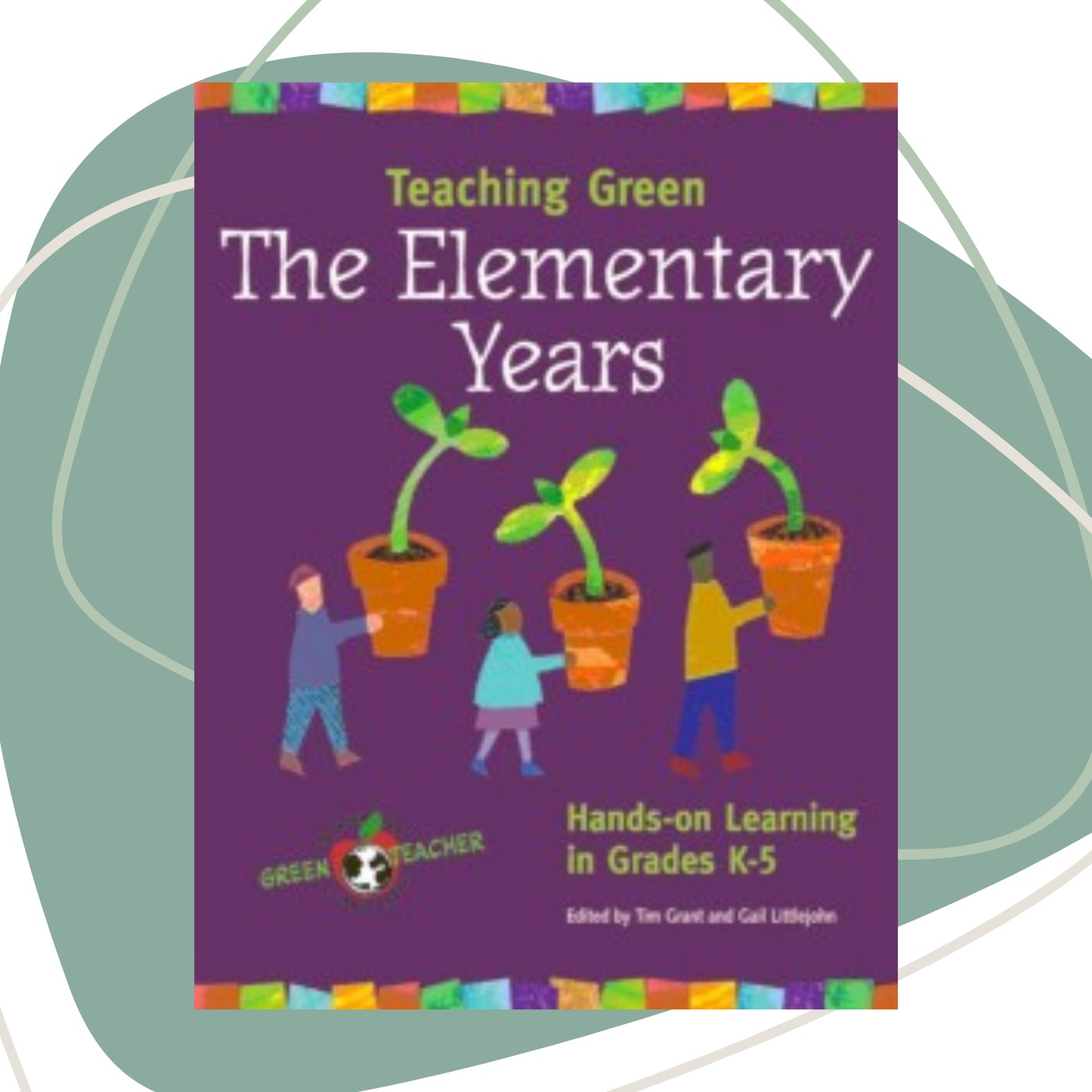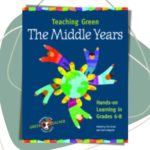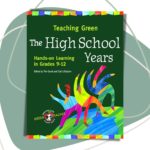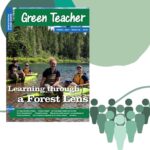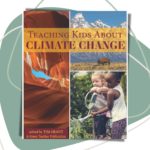Description
This 240-page large-format paperback contains over 50 of the best teaching strategies and activities contributed to Green Teacher during the past decade. Almost all were updated and revised for this special 2005 anthology. As in their book Teaching Green – The Middle Years (for Grades 6-8), Toronto editors Tim Grant and Gail Littlejohn have assembled a wealth of kid-tested ideas contributed by educators from across North America, covering a wide spectrum of environmental topics and presenting a large diversity of practical projects and learning strategies.
In the “Approaches to Learning” section, readers will find innovative ideas for exploring the natural world, promoting environmental citizenship and integrated project-based learning, along with opportunities for taking action and practicing authentic democracy. A particularly interesting article is “Guiding Your School Toward Environmental Literacy,” which outlines a step-by-step whole-school approach used successfully by dozens of Calgary schools over the past decade to evaluate what a school is already doing and then develop a workable plan.
In “Exploring Nature Around Us,” the largest section of the book, a first-grade teacher describes taking her class on an overnight trip; a naturalist suggests ways to get the most out of a pond study; an article titled “The Numbered Forest” gives ideas for incorporating schoolyard trees into mathematics lessons. One author describes how observing patterns in nature—such as the nest-building behaviour of squirrels—can help students to discover basic concepts of ecology. Two others discuss the use of creative journals as a springboard to fresh insights and discoveries about the natural world!
The “Plants and Animals” section includes activities for studying forests and monarch butterflies, as well as a “Great Lakes Food Web Drama” and instructions for creating a tropical rainforest simulation in a school gym. One of the most compelling articles looks at the research showing that having animals in the classroom contributes both to learning and to the development of empathy and respect for all living creatures. Included are useful guidelines for animal care and recommendations on the most appropriate classroom pets.
While the book focuses on helping kids develop a strong connection with the natural world, there are many articles that focus on the social and global aspects of our environment. For example, readers will find activities for promoting global awareness in kindergarten, ideas for organizing a school-wide Development Days theme, and a recipe for baking a “One World Cake” to help students understand how food links us to people and places all around the world. One section describes a variety of projects to link school and community, such as creating community green maps, developing waste-free lunch programs, and building watershed models that educate the community about local threats to water quality. The final section presents ideas for exploring the environment through literature, imagination, and celebration.
The book is attractively designed and organized, and, for each article and activity, the editors have identified appropriate grade levels, subject areas, key concepts, skills, and materials. One other teacher-friendly detail is the practical “lay-flat” binding. The hands-on projects and learning strategies in Teaching Green – The Elementary Years are sure to inspire all educators who are seeking innovative ideas for incorporating green themes into their programs.
How to order:
1. Order online through the Outdoor Learning Store.
Table of Contents
Acknowledgements
Introduction
Approaches to Learning
Getting an Early Start: Environmental Education for Young Children by Ruth A. Wilson (K)
Young Children as Environmental Citizens by Carole Basile and Cameron White (Grades K-12)
Green Empowerment in Kindergarten by Chris Wright (Grades K-1)
Environmental Project Learning by Julie Tracy with Kathleen Glaser (Grades K-5)
Democratic Education for Environmental Stewardship by Peter Corcoran and Margaret Pennock (Grades 3-5)
Guiding Your School Towards Environmental Literacy by Jeff Reading (Grades K-6)
Exploring Nature Around Us
The Single Concept Field Trip by Clarke Birchard and Alan Crook (Grades K-5)
From Pattern to Principle: Discovering Science by Observing Patterns in Nature by Robert Barkman (Grades 3-6)
Studying Pond Creatures by Chris Earley (Grades 2-5)
The Numbered Forest by Emily Kissner (Grades 4-5)
An Overnight Trip with First-graders by Liz Kornelson (Grade 1)
Enjoying Winter with Your Class by Gareth Thomson and Sue Arlidge (Grades 4-5)
The Art of Science by Tina Jory (Grades K-3)
Teaming with Nature by Mark Baldwin (Grades 4-8)
The Creative Journal: A Power Tool for Learning by William F. Hammond (Grades 1-5)
Evaluating Nature Journals by Mike Moutoux (Grades K-5)
Plants and Animals
Forest Studies with Children by Susan Argast and Cheryl Macdonald (Grades 2-4)
A Walk in the Tropical Rainforest by Glenn Gustafson (Grades 4-6)
Making Connections with Insect Royalty by Ann Hobbie (Grades 3-6)
Meet the Monarch! by Karen Oberhauser
Tracking Migratory Animals On-line by Bob Coulter (Grades 3-5)
Mouse Roulette by Gareth Thomson and Kananaskis County Office of EE (Grades 4-5)
Animals in the Classroom by Stephen Huddart and Craig Naherniak (Grades K-5)
The Great Lakes Food Web Drama by Marjane J. Baker (Grades 4-5)
Marine Food Web Simulation by John Ogletree (Grades 4-6)
Environmental Issues
Population Pressure! by Marci Mowery and Lindsay Aun (Grades 3-5)
Mathematics and Garbage by Sylvia Helmer and Shirley Parker-Creasy (Grades 4-6)
Animals in Jeopardy by Annette Payne (Grades K-5)
Investigating Air Quality by Esther Railton Rice and Janice Gardner-Loster (Grades 3-5)
The Water Game by Jennifer Baron (Grades 2-3)
A Working Model of a Stream by William F. Hammond (Grades 2-5)
One Fish Two Fish by Michele Hoffman-Trotter (Grades 1-4)
Investigating Ocean Pollution by Sue LeBeau (Grades 3-5)
Building Community
Questing: Discovering Community Treasures by Steven Glazer (Grades 3-8)
Asphalt Artisans: Creating a Community Eco-map by Paul Fieldhouse and Lisa Bunkowsky (Grades K-8)
Educating the Community: A Watershed Model Project by C.S. Perryess (Grades 3-5)
Monument to a River: An Interactive Playground Structure by Bruce Robert Dean (Grades K-5)
Waste-Free Lunches: A Lesson in Environmental Stewardship by Amy Hemmert (Grades K-5)
Warriors of the Rainbow by Roberta Oswald and Carmel Preyra (Grades 3-6)
Cool Schools: A Schoolwide Conflict Resolution Program by Fran Jovick (Grades K-5)
Global Awareness
Global Education in Kindergarten by Karen Green (K)
The World in a Cake by Jackie Kirk and Mary Gale Smith (Grades K-7)
Learning About Interconnectedness by Graham Pike and David Selby (Grades K-4)
Around the World in 90 Days by Michelle Cusolito and Bill White (Grades 4-6)
Development Days: A Schoolwide Theme by Alison Flensburg (Grades K-5)
Teaching Children about Chronic Hunger by Daniel Kriesberg (Grades 4-6)
Imagination and Celebration
Creative Visualization with Children by Jane Hamilton (Grades 2-5)
Environmental Literature: The Power of Stories by Sue Christian Parsons (Grades K-5)
Earth Tales by Michael J. Caduto (Grades 2-5)
Celebrating Earth Week: It’s Elemental by Deanna Fry (Grades K-6)

